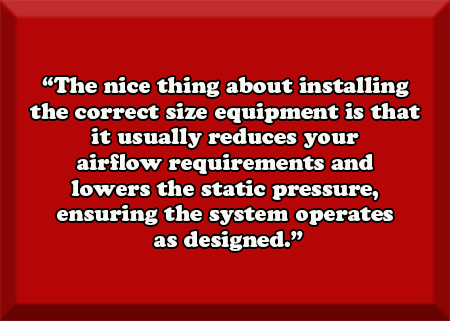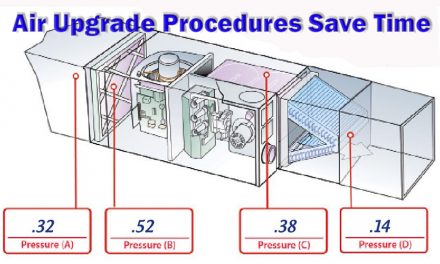Connecting the Dots
Start connecting the dots between the customer’s complaint and what the report tells you. If the homeowner complains about the house being humid, consider offering a solution that involves verifying that the equipment is sized correctly by performing a Manual J calculation.
Then you can set the airflow of the equipment by matching the home’s sensible and latent requirements to the equipment’s performance data.
Finally you can set the system’s correct refrigerant charge.

As you complete the steps needed to correct comfort complaints, ask yourself what happens if the system is oversized for the home.
You need to stop the process and have that conversation with the owner. Let them know that the oversized equipment is likely the cause of their home being so humid.
In this scenario, I usually find low airflow and high duct pressure. The nice thing about installing the correct size equipment is that it usually reduces your airflow requirements and lowers the static pressure, ensuring the system operates as designed. In this scenario, you might sell the customer a new, properly sized system.
Another thing I try to remember is to slow down and collect as much data as possible. It is essential to understand what the home needs vs. what it currently has installed. There is likely more than one issue contributing to the customer’s complaints.
And Finally…
Take a step back and look at the “Big Picture.” Identifying comfort problems becomes an art form. When you can solve these problems, you will develop a positive reputation, and customers will start spreading referrals like wildfire.
Being able to solve issues that other companies can’t puts you ahead of the game and eliminates your competition. This allows you to take the time necessary to do the right thing while charging what your company is worth.
Adam Mufich is an HVAC contractor who is now working as a curriculum developer and instructor for National Comfort Institute (NCI). If you’re an HVAC contractor or technician interested in learning more about Air Upgrades and IAQ, contact Adam at ncilink.com/ContactMe. NCI’s website www.nationalcomfortinstitute.com is full of free information to help you improve your professionalism and strengthen your company.













Is this article available as a PDF?
How is it possible to do an accurate manual J on a house that is not new ?
Hey Scott, here is a link for the PDF of the issue: https://hvactoday.com/monthly-issue.
I think you are absolutely right; performing an accurate Manual J can be tricky on existing homes. I start off by referencing building codes that were active at the time the home was built. I also look at the windows and doors to see if they look like they have been replaced. If they have been, and the U-values and other data is unknown, then I use the generic tables in Man J.
There are also tricks to figure out how many panes of glass and so on. You can get really fancy and use a website called recalc.com.” They have a calculator where you can take the Delta T of a surface temperature and it will estimate the R value for you. Overall I would say performing a load calculation on an existing home is more of an art than a science. If the values are unknown, do your best to guestimate. So far I have not had any jobs that have come back to haunt me.